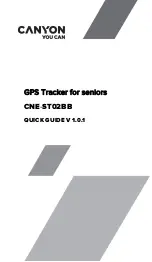
CAP 413
Radiotelephony Manual
Chapter 2 Page 9
1.8.4
An aircraft shall not change its callsign type during a flight.
However
, where there is
a likelihood that confusion may occur because of similar callsigns, an aircraft may be
instructed by an air traffic service unit (ATSU) to change the type of its callsign
temporarily.
1.8.5
The similarity of some aircraft callsigns on the same frequency can cause confusion
which may lead to an incident. The following are particularly liable to be confused:
a) Callsigns which have in common three or more digits, especially when the flight
numbers are the same, e.g. AIC 515 and SAS 515;
b) Aircraft with similar registrations, e.g. G-ASSB and G-ATSB or HB-SSB.
Controllers are to warn the pilots concerned and, if necessary, instruct one or both
aircraft to use alternative or full callsigns while they remain on the frequency.
1.8.6
Aircraft in the heavy wake turbulence category shall include the word ‘HEAVY’
immediately after the aircraft callsign in the initial call to each ATSU. The purpose of
this call is to confirm the aircraft type and/or wake turbulence category is the same as
that stated on the flight progress strip. For the A380 the word "SUPER" is to be
included after the callsign on initial contact.
1.8.7
On initial contact, student pilots who are flying solo shall use the callsign prefix
‘STUDENT’
1
. Once acknowledged, it will not normally be necessary for student pilots
to use the prefix in subsequent transmissions until making initial contact with other
ATSUs, unless they feel they are being instructed to do something with which they
are unfamiliar.
1.8.8
Controllers will acknowledge the initial call, again using the prefix, and can be
expected, in so far as is practicable, to make due allowance for the limited experience
and ability of student pilots in determining the pace and complexity of instructions
and/or information which are subsequently passed.
1.8.9
Flight Instructors must brief students, specifically, on the use of this callsign prefix as
part of their pre-solo briefing. The use of this callsign prefix is not intended to remove
the additional requirement for flight instructors to notify ATSUs separately of ‘first
solo’ flights where this is normal practice.
1.8.10
When receiving an ATS surveillance service, certain ex-military aircraft types have
been granted a CAA exemption from the Air Navigation Order requirement to fly at an
IAS less than 250 kt below Flight Level 100. In order to alert the controller to this
higher speed profile, pilots of exempted aircraft shall, on initial contact, prefix the
aircraft callsign with 'FASTJET' or 'FASTPROP' (depending on propulsion type), e.g.
“Kennington Radar, FASTJET G-ABCD request Deconfliction service”. Use of this
prefix shall be confined to initial contact with ATC agencies for periods of flight during
which operations at airspeeds in excess of 250 kt are intended. Once acknowledged,
it will not normally be necessary for pilots to use the prefix in subsequent
transmissions until making initial contact with other ATSUs.
1.
Although intended primarily for use by ab initio students, the prefix shall also be used in other circumstances where, for
example, the holder of a valid licence is returning to flying practice after a significant absence and is undergoing renewal
training involving solo flight conducted as a student under the supervision of a flight instructor.
Walden Tower, STUDENT
G-ABCD, on the apron, request taxi
for local VFR flight
STUDENT G-ABCD, Walden Tower,
taxi holding point Alpha, runway 24
Wrayton Information, STUDENT G-
ABCD, request Basic Service
STUDENT G-ABCD, Wrayton
Information, pass your message
31 March 2011
Summary of Contents for 413
Page 1: ...CAP 413 Radiotelephony Manual Edition 20 www caa co uk Safety Regulation Group ...
Page 2: ......
Page 3: ...CAP 413 Radiotelephony Manual Edition 20 Safety Regulation Group 17 November 2011 ...
Page 6: ...CAP 413 Radiotelephony Manual Amendment Number Amendment Date Incorporated by Incorporated on ...
Page 10: ...INTENTIONALLY LEFT BLANK ...
Page 18: ...INTENTIONALLY LEFT BLANK ...
Page 20: ...INTENTIONALLY LEFT BLANK ...
Page 68: ...INTENTIONALLY LEFT BLANK ...
Page 126: ...INTENTIONALLY LEFT BLANK ...
Page 162: ...INTENTIONALLY LEFT BLANK ...
Page 170: ...INTENTIONALLY LEFT BLANK ...
Page 178: ...INTENTIONALLY LEFT BLANK ...
Page 206: ...INTENTIONALLY LEFT BLANK ...
Page 248: ...INTENTIONALLY LEFT BLANK ...
Page 254: ...INTENTIONALLY LEFT BLANK ...
Page 264: ...INTENTIONALLY LEFT BLANK ...
















































